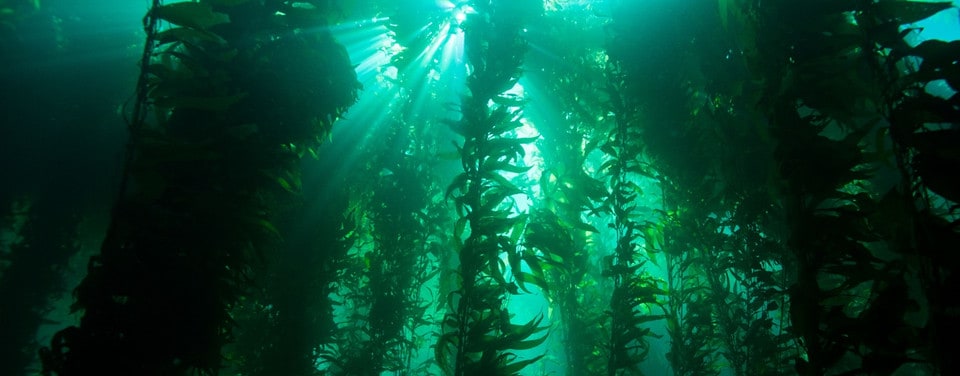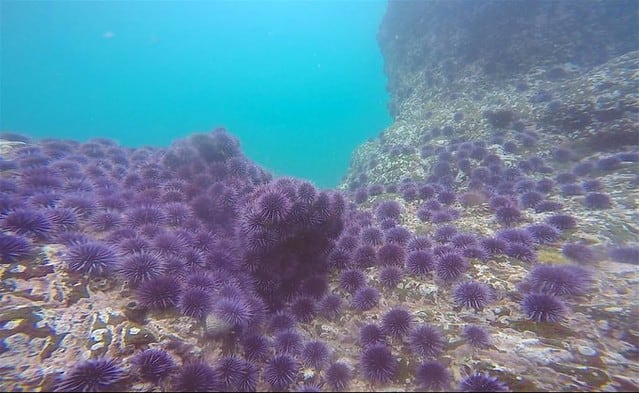In recent years, several oceanic ecosystems have become affected by urchin barrens — desert-like areas where the growth of sea urchins has gone unchecked and has destroyed the kelp forest that fostered rich biodiversity. But, according to a new study, a type of sea star could help with that.

Kelp forest ecosystems are some of the most important biodiversity hotspots on the planet. Kelp is a type of brown seaweed that can grow vertically to heights of 175 feet (53.4 m). These kelp “forests” support a wide variety of marine animals, including fish, crustaceans, and sea otters, and help sequester carbon and keep the oceans healthy. Kelp forests occupy much of North America’s coasts.
But lately, times have been tough for kelp forests.
Pollution and climate change are two of the main threats faced by kelp forests, and to make matters even worse, sea otters were hunted to near extinction in the 18th and 19th century. The loss of sea otter populations caused surprising damage to kelp forests. The otters were keeping urchins in check, and without the otters, the urchin population expanded greatly, consuming the kelp forests and eliminating the support they offered.
Over the past decade, another catastrophe hit kelp: a wasting disease that affects sea stars, fueled by climate change, wiped out almost all of the sunflower sea stars in Oregon and Washington. The outbreak was so severe that the species is now considered critically endangered. The sea star, called Pycnopodia helianthoides, was also an urchin predator, and with it almost gone, the urchins really took over.
“Once otters were gone, Pycnopodia were still here. So the fact that more than 90 percent of these sea stars died off was huge,” study co-author Aaron Galloway at the UO’s Oregon Institute of Marine Biology, said. “We’ve had an unfortunate pile of conditions that have been very bad for kelp forests, made worse by recent marine heat waves.”

Recently, there’s been some encouraging news with otters returning to their former habitats, and researchers are also looking for ways to help Pycnopodia recover. But will this actually help kelp forests recover and repopulate the urchin barrens? According to the new study, the answer is ‘yes’.
We show, using the experiments and a population model, that these very large-scale purple sea urchin barrens probably couldn’t have developed in the presence of sunflower sea stars,” Galloway said. “Our findings indicate that if Pycnopodia recovers, it should suppress these urchin barrens and help the kelp forest recover.”
The researchers collected sunflower sea stars at some of the sites where populations managed to avoid the wasting disease. They placed the sea stars in tanks and set up feeding experiments. The experiments showed that the sea stars were not picky and pursued both healthy and starved urchins.
This may not seem like much, but it’s a particularly important finding: urchins devour the kelp forests until there’s not much left at all (hence the ‘barren’). The urchins themselves suffer in this scenario — they can survive, but are starved. Sea otters, the other major urchin predator, tend to pursue healthy urchins as opposed to those from barrens, so the otters’ ability to replenish kelp forests may not be as great.
“If you were to have a sea star dropped into an urchin barren, we have evidence now that suggests they’re going to just start eating their way through it,” Galloway said.
However, for the ecosystem to truly recover to the way it was before the man-made damage, both otters and sea stars must play a role. Otters would target the larger urchins, while the sea stars would focus on the smaller ones that can squeeze through the cracks.
“In a functioning kelp forest ecosystem, Pycnopodia will play an important role in foraging for these herbivores in the cracks,” Galloway said. They can slither into the smallest cracks, and they’ll eat the smaller urchins that sea otters won’t bother with.
Of course, the problem is actually getting the sea stars (and otters) to recover. Some conservancy programs are in place, and understanding their role and behavior more precisely can help, but tackling the larger problems like pollution or ocean heating is still a problem without any clear solutions.
For now, vast swaths of what used to be kelp forests have turned into urchin barrows. But help could be on the way.
Journal Reference: A. W. E. Galloway et al, Sunflower sea star predation on urchins can facilitate kelp forest recovery, Proceedings of the Royal Society B: Biological Sciences (2023). DOI: 10.1098/rspb.2022.1897






